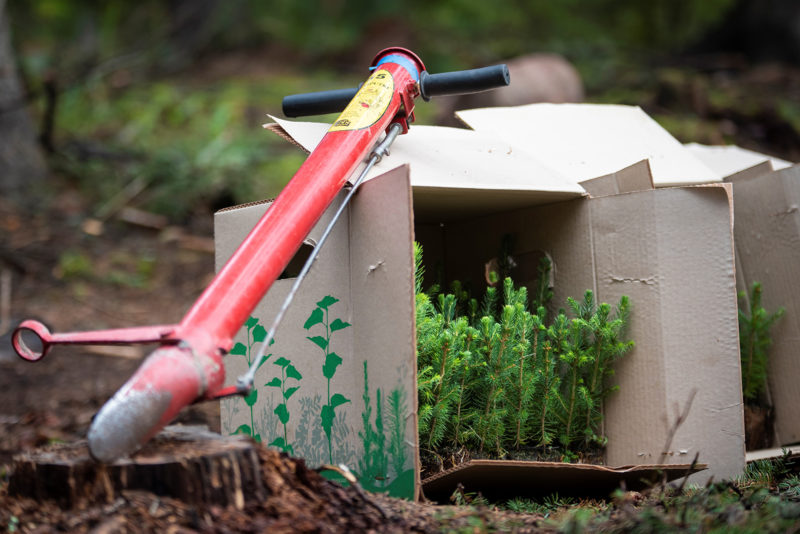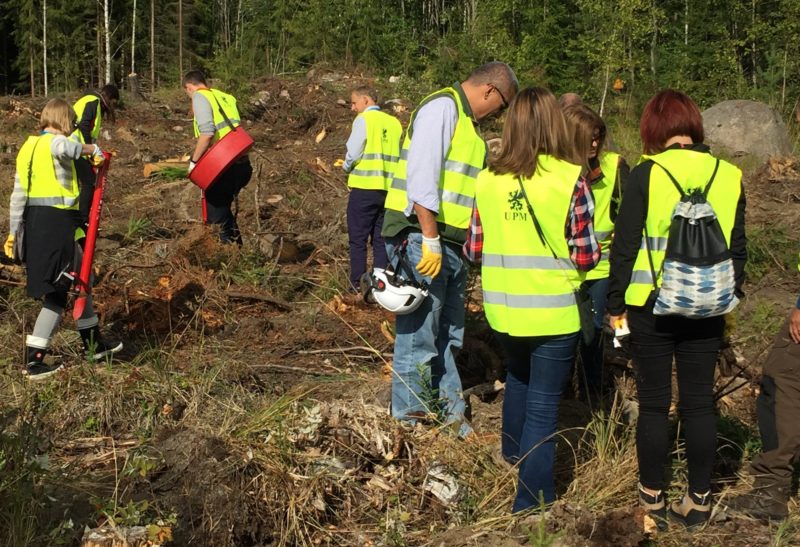Towards greater coherence on forests

The EU is showing leadership in putting sustainability to practice on many fields, especially on the continuous learning and building on what constitutes sustainable forest management. As Finland currently hosts the EU Presidency, forests are naturally high on the agenda. As a natural resource surrounding citizens throughout the country, everyone has a connection to and an opinion on forests. As this is the case, forests have always been discussed, sometimes heatedly in Finland. Forest Director-Generals of the EU country ministries recently discussed the EU Forest Strategy and the Legally Binding Instrument on Forests as part of the Presidency.
In this vein, it is quite timely that the sustainability of forest use is being raised high on the environmental discussion agenda globally. The solutions that a sustainable use of forests can provide are welcomed but also questioned.
The EU plays a key role in tackling the sustainability challenges of our time. Replacing fossils is of course what we aim at. The forest decisions that EU makes also have an effect on forests and land use outside the EU. The global fight against deforestation and forest degragation are both pressing questions of our times and hence issues the forest sector in the EU is keen to help to provide solutions for. This provides opportunities to turn challenges and needs to new businesses, innovations building on science and applying and developing new generation cleantech technology.
Efficient use of a sustainable renewable resource provides solutions and leads to a sustainable life
The forests provide an abundance of goods and services. Furthermore, solutions for the future could be based on even many more parts of wood than today, be it further findings on cellulose, lignin or hemicellulose. Research is finding new innovative ways to produce state of the art textiles, chemicals and medicines. However, these are but some of the many innovations in sight. Sky is the limit really.
The European Union is intensifying work into providing an even more inclusive approach to the forests and the solutions their sustainable management provides. European wide forest legislation is still a fair ways to being put into practice from being pondered upon. A common forest strategy for the EU is a way to steer the member states in the same direction, focusing on the things that the countries share as opposed to what divides them.
In this, some of the world’s most advanced forest countries share their knowledge, commitment and enthusiasm to solve societal challenges. The current EU Forest Strategy extends until 2020. It is in the interest of both the European Council and the forest sector stakeholders to strengthen the strategy in the coming years.
The current challenge for an efficient and workable forest strategy is the increasing number of forest-related policies and the complex and fragmented forest policy environment on the EU level.
Work towards a more coherent policy environment must continue in order to tackle a number of critical global challenges. Due to the lack of common EU forest policy this is not an easy task, but for this very reason an all the more important one.
The essence of what the strategy should deliver is: to underpin well-coordinated and coherent forest-related policies at EU, international and national levels, and the conditions necessary for safeguarding and enhancing the sustainable management and use of forests and their multiple goods and services.
Tighter links to sustainable development agenda and international policy environment
The global environment and challenges it faces has changed significantly in the last ten years. This is increasingly influencing the various EU policies as well. The Agenda 2030 and its Sustainable Development Goals, SDGs, the Paris Agreement, the Convention on Biological Diversity and other international forest-related instruments all play a role in guiding the work on sustainable development on a global level. The UN Strategic Plan on Forests also sets the aim at year 2030. It serves as a strategic framework to enhance the coherence of and guide and focus the work of the international arrangement on forests and its components. The function of the UN at the global policy level is very similar to the function that the EU Forest Strategy should have at the EU level.
A new, stronger EU forest strategy is needed. A key question is, how should a possible future EU forest strategy address the demand for sustainable wood supply, to effectively contribute to the bioeconomy in the EU, the provision of jobs, and the competitiveness of EU forest-based industries, in the current changing climatic and rural depopulation conditions. The new EU forest strategy should span all the way from sustainable, climate wise management of forests to innovative end products. The EU bioeconomy strategy and forest strategy should go hand in hand.
How could a possible EU forest strategy be an effective element of the EU contribution to addressing the main sustainability challenges of our time, in particular the fight against deforestation and forest degradation, and thus further help promoting sustainable forest management globally?
The European Council clearly recognises the need for a new EU forest strategy to further strengthen the consistency and coherence of EU forest-related policies after 2020. Expectations are of course high. There is no time to waste. Planting trees is seen as a key instrument in fighting climate change. Very often the focus of discussion has been on how forests are able to mitigate climate change. At least equally important is, how to secure the european forests’ resilience in the changing climate. Climate resilience is a major factor for the forest owners, public and private alike, an issue affecting how forests are able to provide solutions for the society. Realistic, large scale and sustainable financing would be the step being formalized and secured thereafter.
